This was published 6 years ago
A writer recalls how the piano offered her protection from social persecution
By Virginia Lloyd
Do you still play the piano? At my 20th high school reunion, it was the only question anyone had for me. Nobody cared whether I was married or divorced, gay or straight; when I had left my home town of Sydney, or for how long I had lived in New York.
The first question, came from a woman gripping the stem of her champagne flute as if for balance. It wasn't even 8pm. "You teach piano, don't you?" Taken aback, I said, "Actually, I haven't taught piano in years. I worked in book publishing, then – ". "Oh," she said, clearly disappointed. "But you still play, don't you? I'll never forget you playing for school assembly all those years."
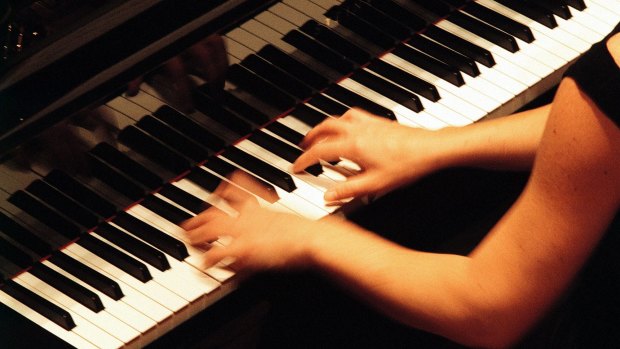
During the 19th century, the piano became "the social anchor of the middle-class home".Credit: Michele Mossop
For assembly, twice a week for six years. For the choir. For the madrigals a cappella group. For the solo instrumentalists and the aspiring opera singer. I played for anyone who needed an accompanist, and for whoever asked me. The piano was my first love and, from the age of seven, I spent 13 years studying the instrument and performing classical music, undertaking annual exams and participating in competitions that to this day remain some of my most vivid experiences of success and humiliation. The onslaught of unanticipated questions from other "old girls" told me it would be a long night, and my first glass of champagne soon emptied.
In the school's political hierarchy I occupied a neutral, if isolated, position. Friendly enough with most of the girls in my year but not a fixed member of any one faction, I was a social Switzerland. Away from the piano, many of the other girls may rarely have given me the time of day, but my ability to reel off popular songs and sight-read – to play a piece of new music at first sight – put me beyond the brunt of their forensic criticism.
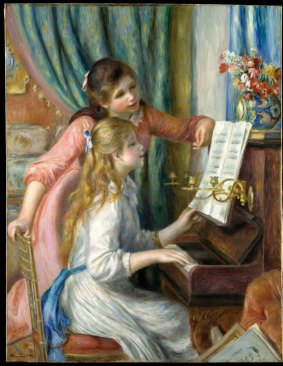
Young Girls at the Piano by Auguste Renoir (1892), Robert Lehman Collection.Credit: Auguste Renoir
Because of the piano I enjoyed a level of immunity from the social persecution that the coolest girls perpetrated on other awkward saps who lacked the protection of an instrument. Twenty years later, I was astounded to realise that despite feeling like the world's biggest nerd at the time, I had earned their admiration and respect even though I could neither see nor enjoy it.
Millions of girls have learned to play the piano over the course of its history, and only relatively recently have gifted women pianists had much say about what to do with their talent.
In 1792, 23-year-old Nanette Stein – who as a talented child pianist had played for Mozart – took over her father Johann's piano-making business. She shifted the family business from Augsburg in Bavaria to Vienna, where there was a burgeoning demand for instruments. In 1794, she established herself as the managing director of a new business under her married name, referencing her father: Nanette Streicher, nee Stein. Hers was effectively one of the first piano factories. Her father's handcrafted output had been approximately 17 pianos a year, but Nanette's operation produced up to 53 in the same time. The piano was on its way into the homes of aristocrats and the wealthiest merchants in Europe as a coveted piece of domestic furniture. And as with any high-end product, emerging technology soon liberated the piano from exclusivity. Before long, thanks to factories such as Streicher's popping up across Europe and the United States, production increased to meet the demand of the burgeoning Victorian middle classes.
By 1847, according to Arthur Loesser's comprehensive Men, Women and Pianos: A Social History, 60,000 instruments were manufactured each year in Paris alone, and 20,000 in England. The piano had become "the social anchor of the middle-class home". The piano shaped Nanette's life, but possibly in a different way from what she had imagined as a child. She was significant in the history of talented women pianists because she turned her musicianship into a thriving business that ushered in generations of girls at the piano from all social classes.
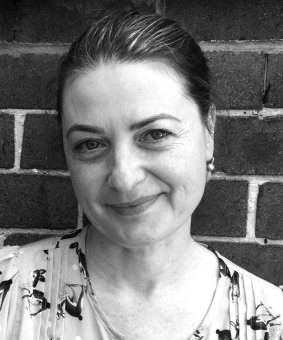
Author Virginia Lloyd.
As the product equally of art and commerce, the piano walked hand in hand with the Industrial Revolution. In its large-scale production, the instrument was one of the first consumer items to face competition from rival nations. Annual production worldwide increased almost tenfold in the second half of the 19th century; by 1910 it was 500,000. But despite the piano's cutting-edge relationship to technology and manufacturing, playing the instrument was seen as a recreation for girls rather than boys.
The 1881 Girls Own Annual included an advice column on how to purchase and look after your piano. In his bizarre bestseller, the 1871 spiritual-musical manifesto Music and Morals, the Reverend H.R. Haweis spuriously maintains that "the piano makes a girl sit upright and pay attention to details", whereas Latin grammar strengthens a boy's memory. I'm not sure if the good reverend ever tried learning a Mozart sonata by heart. Posture aside, I well remember that effort as an intensive and repetitive combination of attention to detail and memorisation.
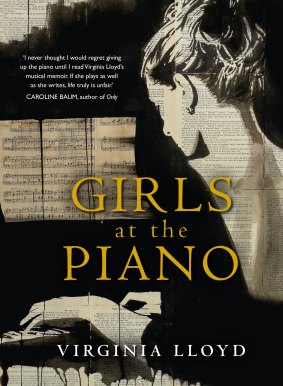
Girls at the Piano by Virginia Lloyd, published by Allen and Unwin.
Not everyone perceived the ubiquity of pianos in domestic life as an altogether happy event. "All – except perhaps teachers of music – will agree that at the present day the piano is too much with us," declared the British Medical Journal in April 1899. Protesting the "scandalous waste of time, money and labour" of music lessons for most piano students, the Journal insisted that "an ordinary intelligent girl will learn half the languages of Europe in the time given to her abortive struggles with an art she really does not care for and cannot understand".
Whether or not this judgment was true, the piano lost its central place in domestic life after World War I. Presented with the gramophone, the pianola and expanding economic opportunities for women, many ordinary intelligent girls found other things to do. By 1977, the year I began learning the instrument, French philosopher Roland Barthes was asking: "Who plays the piano today?".
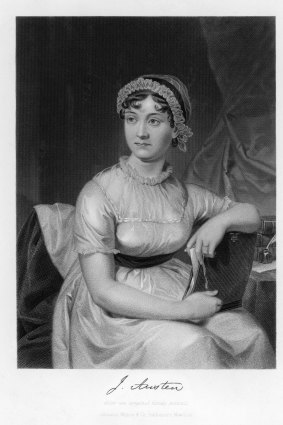
Writer Jane Austen practised the piano every morning until 9.Credit: Rights Managed
After the reunion, I was tormented by the suspicion that I had made a profound mistake.
In Musica Practica, the essay that poses the question, Barthes describes the decline in amateur musicianship as only an amateur musician can: with nostalgia and indignation. "Initially the province of the idle (aristocratic) class, it lapsed into an insipid social rite with the coming of the democracy of the bourgeoisie (the piano, the young lady, the drawing room, the nocturne), and then faded out altogether," he writes.
His potted history has a large hole in it the size of millions of working-class families, who embraced the piano as a ticket to respectability in the second half of the 19th century. While thousands of upper middle-class girls may have been playing nocturnes in drawing rooms for prospective husbands, working-class families caused the explosion in demand when upright pianos became available mid-century. The upright is easier to fit into a room than a grand piano, and much cheaper. And to accommodate families aspiring to acquire one, piano makers invented the payment system of hire-purchase, meaning that the instrument was the first product to be sold by this method. Those without the means to pay in full at the time of ordering could take delivery for a deposit and then make a series of monthly repayments until they owned their piano outright. The system proved so successful that by 1892 hire-purchase comprised 70 per cent of all piano sales.
In Women in Love, D.H. Lawrence gets close to the truth, which is to say the symbolism, of piano ownership, when he writes of the "amazing heights of upright grandeur" provided by a piano in the home of a coalminer: "It makes him so much higher in his neighbouring collier's eyes. He sees himself reflected in the neighbouring opinion ... several feet taller on the strength of the pianoforte, and he is satisfied."
At the most literal level, amateur pianists tend to play as adults the music they learned as children, not straying far in terms of repertoire from those individual works that loom disproportionately large in their imagination. Jane Austen, who was born in 1775, was a diligent piano student. She practised every morning before nine, when she prepared a breakfast of tea and toast for her father and the rest of the family.
The last quarter of the 18th century was a time when Beethoven was composing and Mozart famous, but they don't make it into her novels. Jane's heroines perform works by Haydn, Hoffmeister, Pleyel and Sterkel – composers whose music she learned as a teenager.
As a piano student, my holy trinity was Bach, Mozart and Beethoven. In the same way that we are what we eat, we become whom we play. The principle holds true for the professional as well as the amateur musician. Amateur. It's a French word that comes from the Italian amatore, which itself descends from the Latin amator, or lover. In the coy phrasing of the OED, an amateur is someone who is "fond of something" or who "has a taste for something".
The amateur is the person who chooses to spend time practising the thing they love – and more often than not, they're doing it without hope or expectation of monetary reward, an attitude that today is increasingly regarded with suspicion if not downright hostility. The person who pursues a passion without a plan to "monetise" the skill or knowledge is considered foolish rather than wise. In its adjectival form, amateur is defined by contrast with professional, which is all about getting paid. As a result, the amateur is associated with a lack of skill.
What the women at my high school reunion did not know was that, having experienced a spectacular failure at the piano [in a competition], I had concluded that I would not – more definitively, could not – become a professional musician. After an adolescence characterised by intensive practice and regular public performance, I had all but renounced my love of the piano. Ever since, I had felt ashamed of being an amateur and could not enjoy playing for its own sake. I had given up all performance opportunities and come to loathe anyone listening to me play; I heard only the gulf between how I used to be able to play, when I practised for hours every day, and how I played now.
After the reunion, I was tormented by the suspicion that I had made a profound mistake. Though I had lived with a keyboard or an upright piano nearby for most of my adult life, my playing mostly felt half-hearted.
Two decades later, the reunion made me suspect that my early dedication to the piano had shaped my life in ways I had not fully understood, and that by cutting myself off from the instrument, I had lost something. After years of self-enforced hibernation, the reunion forced me to recognise that I yearned to connect again – with other people, and with the piano.
An edited extract from Girls at the Piano by Virginia Lloyd which is published by Allen & Unwin at $32.99 on March 28. World Piano Day is March 29.